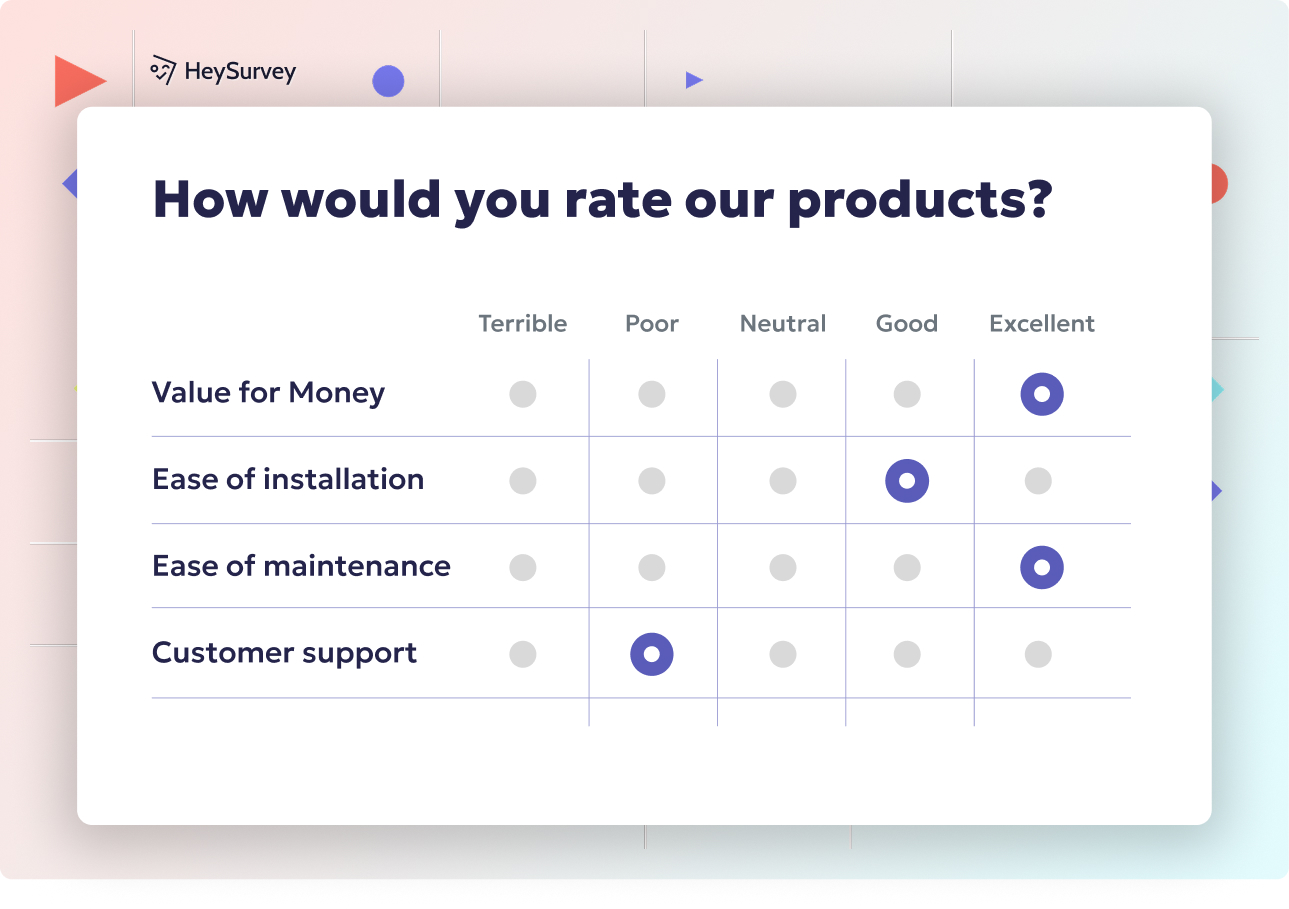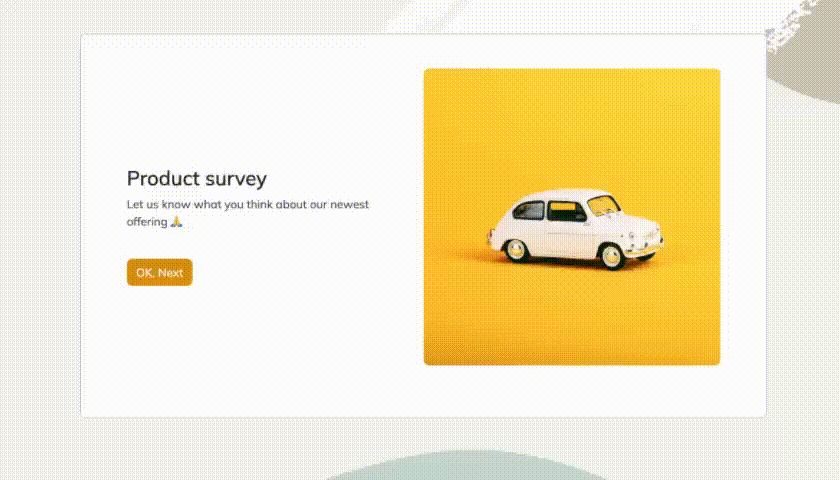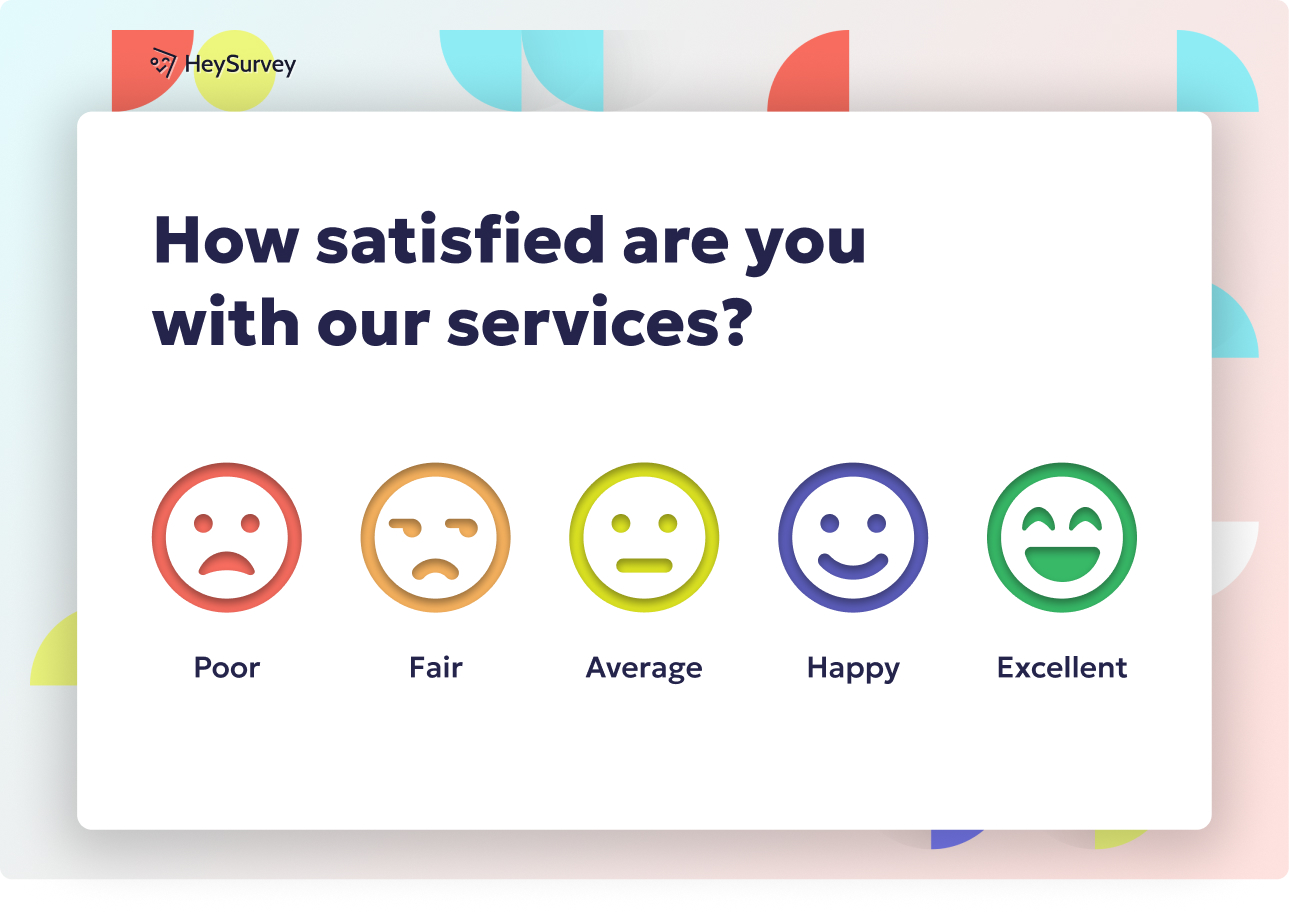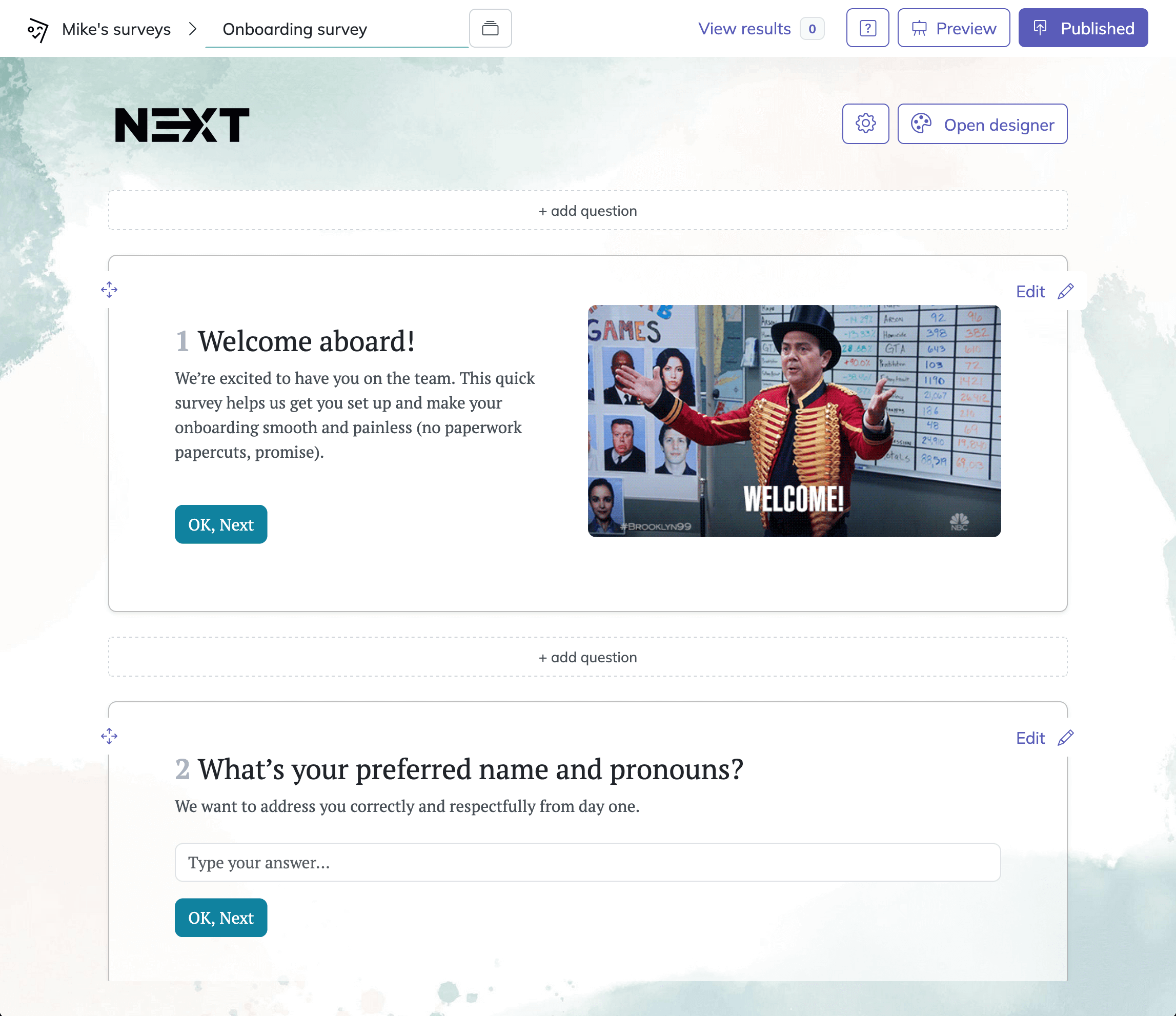30 User Feedback Survey Questions for Better Insights
Discover 40+ user feedback survey questions across 8 types to boost product insights, UX, and customer satisfaction effectively.
Every business dreams of being in sync with its users. This is only possible when you gather their thoughts, frustrations, hopes, and pet peeves directly—with user feedback surveys. The secret sauce isn’t just asking questions; it’s choosing the right survey at the right time, using language that feels human, and harvesting genuine data that turbocharges your product, marketing, and SEO. In this guide, we’ll unveil eight types of user feedback surveys, explaining why and when each works best, plus give you five juicy sample questions ready for action.
Product Feedback Surveys
Why & When to Use
Product feedback surveys are the backbone for understanding how your product lands in the real world. You want candid opinions from users who’ve spent enough time—usually 2 to 4 weeks—to get a clear sense of your product’s value.
The feedback you gather guides your team when validating the roadmap, fixing churn triggers, and crafting that elusive "aha!" experience. Not only do these surveys uncover performance insights, but they also help you outmaneuver competitors. When you listen to your users post-purchase, you signal you care. And guess what? That empathy often leads to higher retention and organic buzz.
These surveys are an ideal companion for big launches, after a feature rollout, or when competitive heat is rising. Their strategic timing makes users feel genuinely heard—increasing the odds of insightful, actionable responses.
Five Sample Questions
What primary problem does our product help you solve?
Which three features deliver the most value to you?
How would you rate the product’s ease of use on a 1–10 scale?
What, if anything, almost stopped you from continuing to use the product?
If you could change one thing about the product, what would it be?
Clearly defining survey objectives aligns questions with goals, directs respondent engagement, and reduces survey fatigue, leading to meaningful and actionable feedback. (growett.com)

Creating a user feedback survey with HeySurvey is a breeze—even if you’re a newbie. Here’s how to get your survey from idea to live in just three easy steps:
Step 1: Create a New Survey
Head over to HeySurvey’s homepage and click on “Create New Survey.” You can start from scratch with an empty sheet or save time by picking a pre-built template tailored for user feedback surveys. Once you select your base, the Survey Editor will open so you can name your survey and begin shaping your questions.
Step 2: Add Questions
Click the “Add Question” button at the top or between existing questions. Choose from question types like multiple choice, scales, or text input. For user feedback surveys, mix quick-rating scales with open-ended questions to get both numbers and rich insights. Customize each question’s wording, add images if you want a splash of visual flair, and mark important questions as required to avoid skipped responses.
Step 3: Publish Your Survey
Feel like everything’s ready? Hit “Preview” to see exactly how respondents will experience your survey on desktop and mobile. When you’re happy, click “Publish.” You’ll receive a sharable link, and if you don’t have an account yet, HeySurvey will prompt you to create one—free to start! Share that link on email, social media, or embed it in your website.
Bonus Step: Apply Branding
To make your survey look uniquely yours, open the Branding Panel. Upload your logo, tweak colors, fonts, and backgrounds in the Designer Sidebar so the survey matches your brand vibe perfectly.
Bonus Step: Define Settings
Jump into the Settings Panel to set when your survey starts and ends, limit the number of responses, or add a goodbye redirect URL that sends users to a thank-you page after submission. You can even allow respondents to view some survey results if you want to boost transparency.
Bonus Step: Branch Into Smarter Paths
Want to ask different questions based on previous answers? Use branching to customize the journey for each respondent. This makes the survey feel personal, keeps it relevant, and improves completion rates by skipping irrelevant questions.
Ready to dive in? Start by opening a user feedback survey template below and watch your insights flow with HeySurvey’s super user-friendly tools!
Website & App Usability Surveys
Why & When to Use
High-performing websites and apps feel intuitive, nobody pauses or scratches their head. That’s where usability surveys shine—they capture the moments when users struggle, stumble, or encounter unnecessary hurdles. Deploy these surveys immediately after a key task: did someone complete checkout, sign up successfully, or just try to find that elusive FAQ page?
These surveys illuminate friction in navigation, sketchy information architecture, unexpected bugs, or page speed snags. By inviting in-the-moment feedback, you lower bounce rates and nudge more folks toward conversion. They’re also a gold mine for accessibility wins and legal compliance.
Use usability surveys after UX changes, during A/B tests, or at regular review intervals. Getting granular about pain points makes your product lovable—and keeps your users clicking through with delight.
Five Sample Questions
How easy was it to complete your task today? (1–5)
Which page or step, if any, felt confusing?
Did you encounter any errors or bugs? If yes, please describe.
What information did you expect but could not find?
How would you improve our site/app experience?
Implementing usability surveys immediately after key tasks helps identify navigation issues, information architecture problems, and unexpected bugs, leading to improved user experience and increased conversions. (moldstud.com)
Onboarding & First-Time Experience Surveys
Why & When to Use
Let’s be honest, first impressions really do count. That’s why onboarding and first-time experience surveys are critical: catch your users right after sign-up, their first session, or following their first purchase. If users get lost or overwhelmed in these moments, churn is just a click away.
Arming yourself with fresh-eyed insights means you can flatten the learning curve, speed up time-to-value, and create tutorials that people actually want to use. These surveys go beyond surface impressions—they diagnose why new users may lose interest and what would make them feel like pros, faster.
Deploy them through email or popups at natural milestones. Just don’t wait too long! The sooner the feedback, the easier it is to keep new users enthusiastic and engaged—before they drift off into the digital sunset.
Five Sample Questions
What motivated you to sign up today?
Which step of the setup process, if any, was unclear?
How confident do you feel about using the product after onboarding? (1–10)
What additional resources would help you get started faster?
Did anything almost stop you from completing onboarding? Explain.
Feature Prioritization Surveys
Why & When to Use
You can’t build everything at once—and you shouldn’t! Feature prioritization surveys help you avoid expensive dead-ends by pinpointing which features your most dedicated users can’t live without. These are best sent to power users, high-potential customers, or segmented beta testers—anyone whose voice carries real weight as you plan your roadmap.
You’ll validate if that cool idea in the backlog is actually worth building, and whether folks are willing to pony up extra cash for it. Because nothing kills momentum faster than launching a feature nobody asked for (or worse, nobody uses).
Timing is everything: shoot these out before sprint planning, during roadmap reviews, or as pre-launch teasers. Aligning development with high-stakes features means your team stays efficient—and your users feel like co-creators instead of passengers.
Five Sample Questions
How important is [Feature X] to your workflow? (Not → Critical)
Rank the following feature ideas from most to least valuable.
How much would you be willing to pay monthly for [Feature Y]?
What is the biggest limitation you face without this feature?
Which competitor feature do you wish we offered?
Combining qualitative user interviews with quantitative Kano model surveys enhances feature prioritization by providing a comprehensive understanding of user needs and satisfaction. (medium.com)
Customer Satisfaction (CSAT) Surveys
Why & When to Use
Sometimes all you need is to ask, “How did we do?”—and that’s the beauty of customer satisfaction (CSAT) surveys. Short, sweet, and to the point, these are dispatched after a support ticket resolves, a live chat ends, or on a routine schedule. Their laser focus is immediate happiness or disappointment.
Capturing this pulse informs your customer support QA, sharpens your service-level agreements, and highlights opportunities to delight or course-correct before the renewal window arrives. High scores are a green flag; low ones become flags for intervention and improvement.
Perfect for post-interaction check-ins, periodic health reviews, or following the close of a ticket. Because in the end, even a tiny tweak from a single response can elevate your entire user experience.
Five Sample Questions
How satisfied are you with your recent interaction? (1–5 Stars)
Did our support agent resolve your issue today? (Yes/No)
What impressed you the most about the service?
What could we have done better in this interaction?
How likely are you to contact support again when needed?
Net Promoter Score (NPS) Surveys
Why & When to Use
Would your customers vouch for you? That’s the heart of a Net Promoter Score (NPS) survey—one simple metric that measures how many users are raving fans and how many are quietly plotting their escape. It’s beloved for benchmarking, and when sent quarterly or bi-annually, it’s a trusted gauge of growth, virality, and customer loyalty.
NPS correlates directly with your long-term value (LTV) and brand love. By pairing the “golden question” with strategic follow-ups, you not only spot your promoters and detractors—you figure out why they feel the way they do and what might turn neutrals into superfans.
Best practice is to reach out periodically so trends reveal pathways to improvement. And remember: those open-text comments? That’s where the magic happens.
Five Sample Questions
On a scale of 0–10, how likely are you to recommend us to a friend or colleague?
What is the primary reason for your score?
What one thing could we do to improve your score by one point?
Which competitor(s) did you also consider?
How could we exceed your expectations in the next 6 months?
Bug & Issue Reporting Surveys
Why & When to Use
When bugs strike, every minute counts. Bug and issue reporting surveys are, hands down, your fastest route to bug extermination. Embed these forms in your help center, trigger them after error pop-ups, or plant them right inside your app for maximum exposure.
With targeted questions, you turn vague “it broke” feedback into reproducible goldmines for your dev team. A detailed report helps you cut mean time to resolution (MTTR), keep your UX spotless, and stack up solid quality metrics for future releases.
These surveys are perfect to launch whenever a new version drops, after a spike in support tickets, or as a last stage before pushing to production. The better your bug reports, the happier your users—nobody likes stepping on virtual LEGO bricks.
Five Sample Questions
What action were you performing when the issue occurred?
Which device, OS, and browser are you using?
How often have you experienced this problem?
How severely did the issue impact your workflow? (Minor → Critical)
Please provide steps we can follow to reproduce the bug.
Best Practices & Dos and Don’ts for Crafting User Feedback Surveys
User feedback surveys quickly go off the rails without a thoughtful approach. Get the most out of every response by following these must-do strategies:
- Segment your audience carefully and time the survey to context.
- Keep every survey under 3 minutes—respect busy thumbs!
- Mix quick quantitative scales with at least one open-ended question for depth.
- Use unordered lists for simple clarity.
Just as important are the big don’ts:
- Don’t overload with required fields; stick to essential questions only.
- Avoid leading or double-barreled questions that bias answers.
- Never forget to test subject lines and incentives—a little reward lifts response rates.
- Always design with accessibility in mind, supporting screen readers and mobile devices.
Making your survey user-friendly isn’t just polite. It’s a proven way to get more, better, and richer data every single time.
Incorporating a variety of user feedback surveys is the best way to truly understand and delight your customers. Each survey type plays its own unique part—together, they form a complete toolkit for constant improvement. By picking the right questions at the right moments, your product grows more closely aligned with what people actually want. And remember: It’s not about the number of survey responses, but the quality of insights you unlock. Happy surveying!
Related Feedback Survey Surveys

25 Catering Survey Questions to Collect Actionable Feedback
Discover 30 expert catering survey questions to gather actionable feedback that enhances menus, s...

30+ Environment Survey Questions for Sustainable Insights
Explore 30+ environment survey questions with expert tips covering awareness, behavior, corporate...

31 Rite Aid Survey Questions: Complete Guide for Pharmacy Feedback
Discover 28 expert Rite Aid survey questions across 6 key types to capture valuable pharmacy feed...
